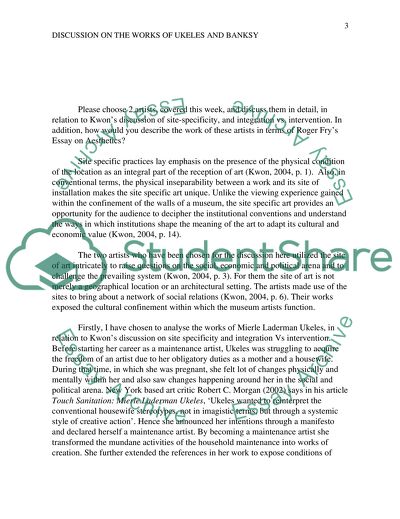Cite this document
(“Banksy/Ukeles Essay Example | Topics and Well Written Essays - 1000 words”, n.d.)
Retrieved from https://studentshare.org/visual-arts-film-studies/1422236-banksy-ukeles
Retrieved from https://studentshare.org/visual-arts-film-studies/1422236-banksy-ukeles
(Banksy/Ukeles Essay Example | Topics and Well Written Essays - 1000 Words)
https://studentshare.org/visual-arts-film-studies/1422236-banksy-ukeles.
https://studentshare.org/visual-arts-film-studies/1422236-banksy-ukeles.
“Banksy/Ukeles Essay Example | Topics and Well Written Essays - 1000 Words”, n.d. https://studentshare.org/visual-arts-film-studies/1422236-banksy-ukeles.


